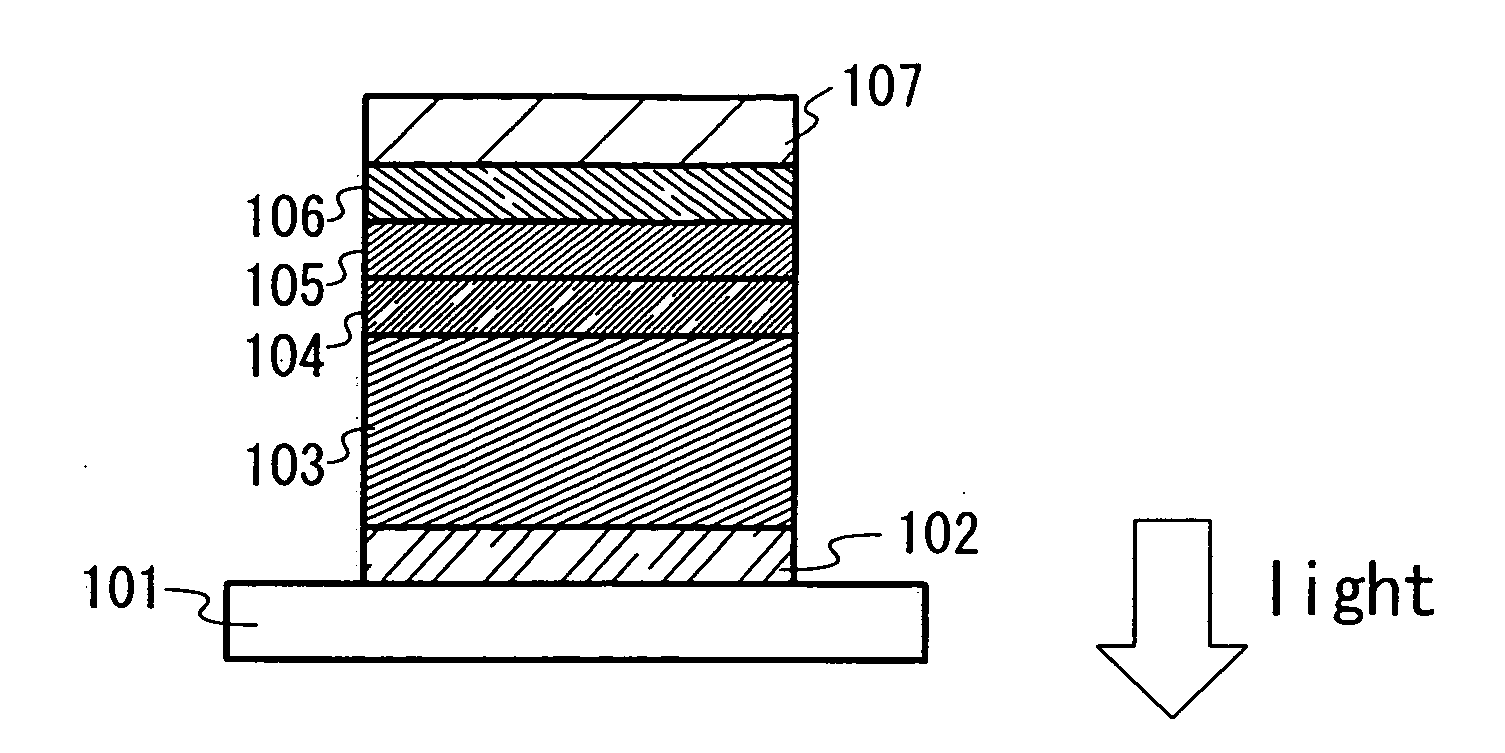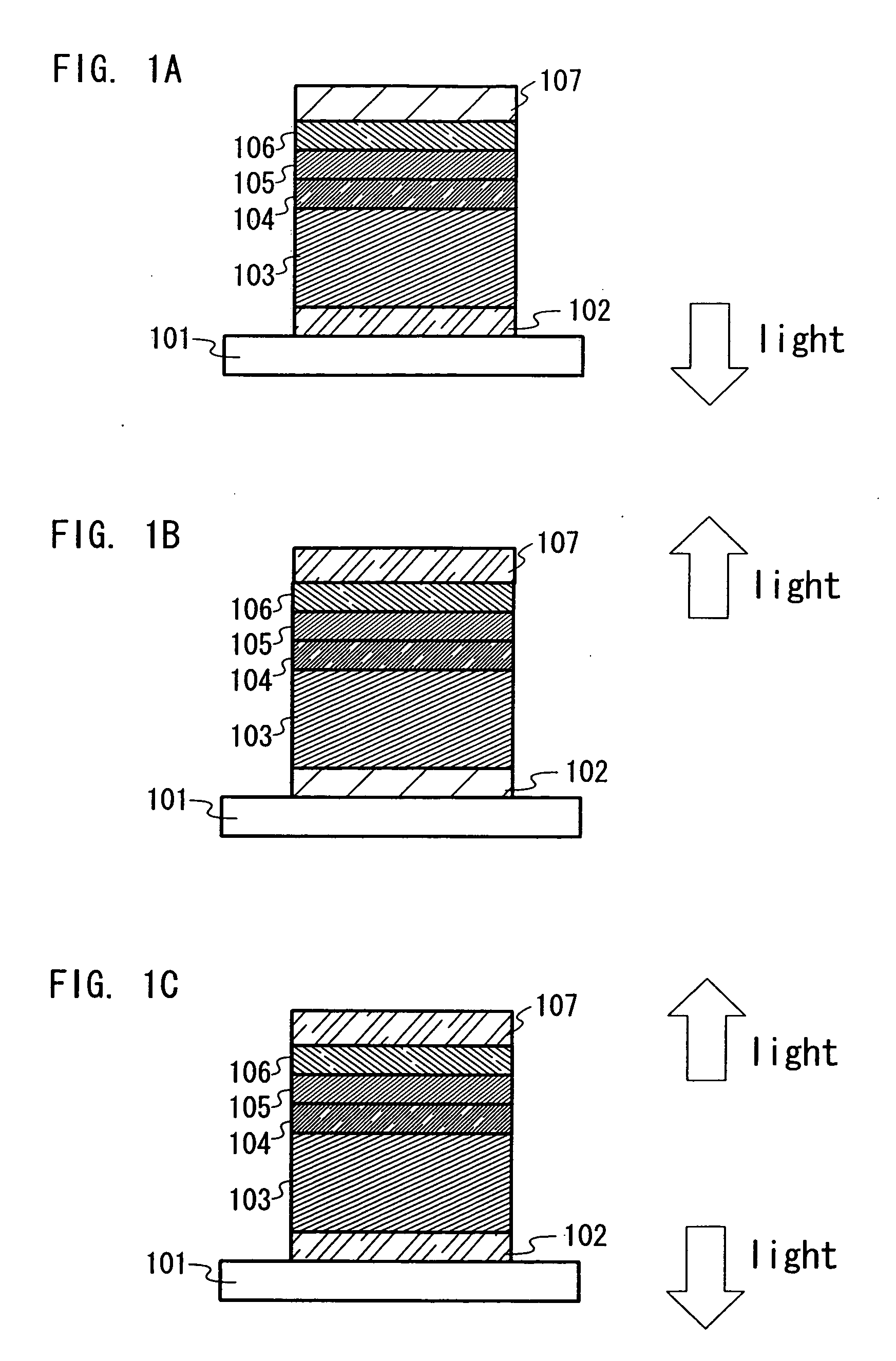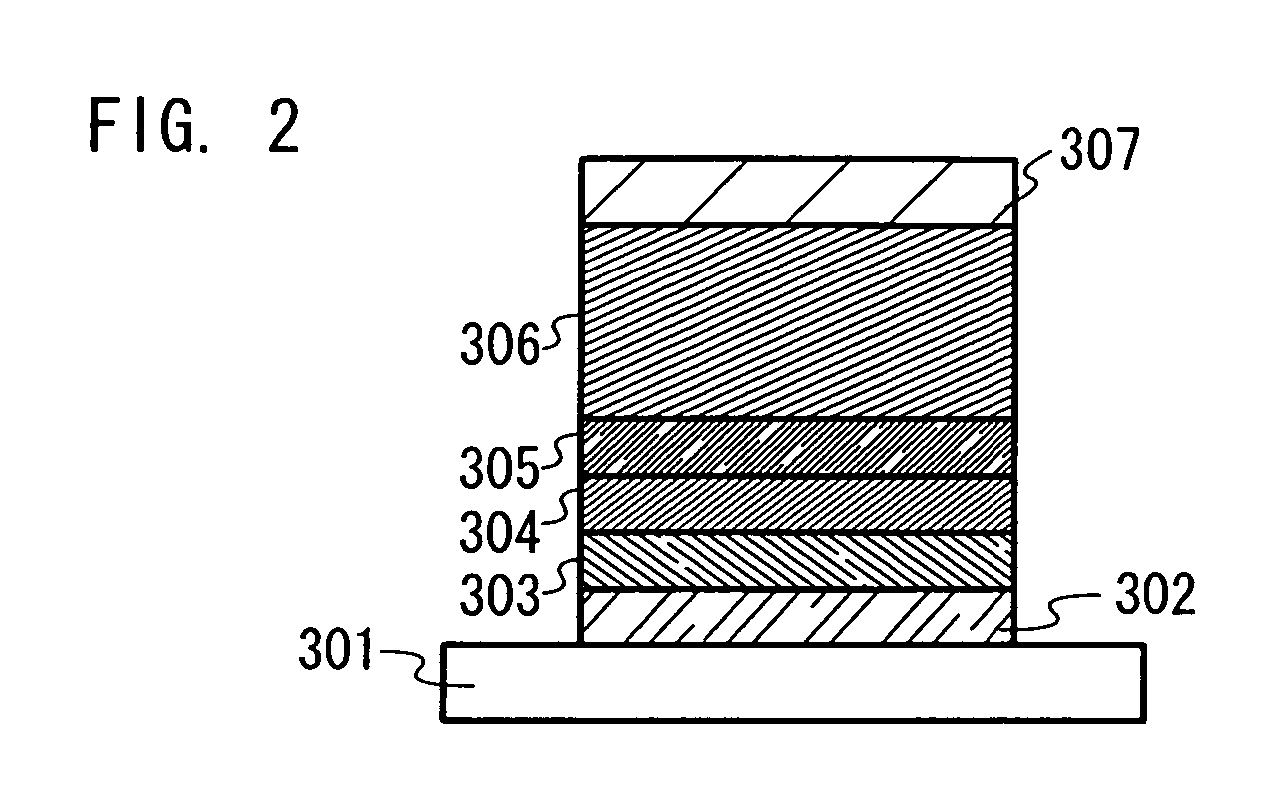Light emitting element and light emitting device
a technology of light emitting elements and light emitting devices, which is applied in the field of light, can solve the problems of easy short circuit between the upper electrode and the lower electrode, the insufficient means disclosed in the patent document 1, and the insufficient means to prolong the lifetime of the light emitting element, etc., and achieves the suppression of the increase in driving voltage, prolonging the lifetime, and low activation energy of electrical conductivity
- Summary
- Abstract
- Description
- Claims
- Application Information
AI Technical Summary
Benefits of technology
Problems solved by technology
Method used
Image
Examples
embodiment mode 1
[0052] A light emitting element of the present invention includes a plurality of layers between a pair of electrodes. The plurality of layers are laminated by combining layers made from a substance having a strong carrier injecting property and a substance having a strong carrier transporting property such that a light emitting region is formed away from the electrodes, or, carriers (supports) are recombined at a portion away from the electrodes.
[0053] One mode of the light emitting element of the present invention will be described with reference to FIG. 1A.
[0054] In this embodiment mode, the light emitting element includes a first electrode 102, a laminated body formed by laminating a first layer 103, a second layer 104, a third layer 105 and a fourth layer 106, over the first electrode 102 in this order, and a second electrode 107 provided on the fourth layer 106. In this embodiment mode, the first electrode 102 serves as an anode and the second electrode 107 serves as a cathod...
embodiment mode 2
[0079] In this embodiment mode, a layer having low activation energy of electrical conductivity shown in Embodiment Mode 1 (i.e., a layer containing both an organic material and an inorganic material, and whose activation energy of electrical conductivity is 0.01 eV or more and less than 0.30 eV, preferably, 0.01 eV or more and less than 0.26 eV, and more preferably, 0.01 eV or more and less than 0.20 eV) will be described in more detail.
[0080] A case where a layer containing both an organic material and an inorganic material, does not have an absorption peak in a visible light region, will be described in this embodiment mode. Specifically, a layer containing DNTPD and molybdenum oxide, which does not have an absorption peak in a visible light region, will be described in this embodiment mode. FIG. 11 shows an absorption spectrum of a layer containing DNTPD and molybdenum oxide, which is formed by co-evaporation such that a weight ratio between DNTPD and molybdenum oxide is 1:1. A...
embodiment mode 3
[0098] A case where a layer containing both an organic material and an inorganic material has an absorption peak in a visible light region, which is different from Embodiment Mode 2, will be described in this embodiment mode. In this embodiment mode, a layer containing BSPB and molybdenum oxide, which has an absorption peak in the visible light region, will be described. FIG. 12 shows an absorption spectrum of a layer, which is formed by co-evaporation of BSPB and molybdenum oxide such that a weight ratio between BSPB and molybdenum oxide is 1:1. According to FIG. 12, it is known that the layer containing BSPB and molybdenum oxide has an absorption peak in the visible light region. In addition to BSPB, a layer containing an organic material such as TPD, α-NPD, DFLDPBi and BBPB, and molybdenum oxide has an absorption peak in the visible light region.
[0099] A film with a thickness of 110 nm was formed using ITO over a first glass substrate to form an anode having an area of 4 mm2. Th...
PUM
 Login to View More
Login to View More Abstract
Description
Claims
Application Information
 Login to View More
Login to View More - R&D
- Intellectual Property
- Life Sciences
- Materials
- Tech Scout
- Unparalleled Data Quality
- Higher Quality Content
- 60% Fewer Hallucinations
Browse by: Latest US Patents, China's latest patents, Technical Efficacy Thesaurus, Application Domain, Technology Topic, Popular Technical Reports.
© 2025 PatSnap. All rights reserved.Legal|Privacy policy|Modern Slavery Act Transparency Statement|Sitemap|About US| Contact US: help@patsnap.com



